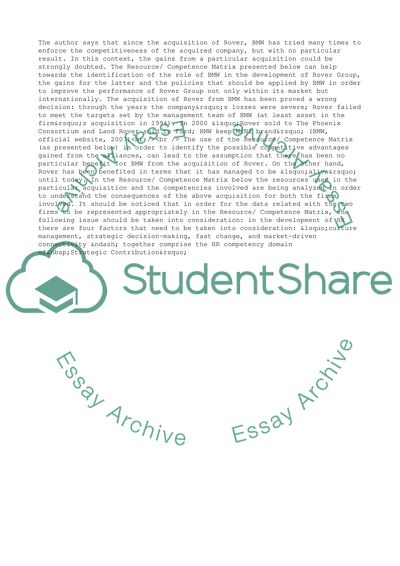Cite this document
(BMW's Acquisition of The Rover Group Assignment, n.d.)
BMW's Acquisition of The Rover Group Assignment. Retrieved from https://studentshare.org/management/1543251-bmws-acquisition-of-the-rover-group
BMW's Acquisition of The Rover Group Assignment. Retrieved from https://studentshare.org/management/1543251-bmws-acquisition-of-the-rover-group
(BMW'S Acquisition of The Rover Group Assignment)
BMW'S Acquisition of The Rover Group Assignment. https://studentshare.org/management/1543251-bmws-acquisition-of-the-rover-group.
BMW'S Acquisition of The Rover Group Assignment. https://studentshare.org/management/1543251-bmws-acquisition-of-the-rover-group.
“BMW'S Acquisition of The Rover Group Assignment”, n.d. https://studentshare.org/management/1543251-bmws-acquisition-of-the-rover-group.


